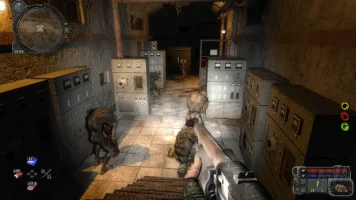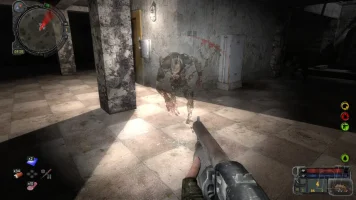Official Review
The opening video recaps both real and fictional events leading to the Zone's mysterious core being exposed. The military launches 'Project Fairway' to beat other groups to the area. As expected, things go wrong, and ex-Stalker Major Alexander Degtyarev is tasked with investigating downed helicopters in Prypiat's outskirts.
Improving significantly on the enjoyable but weaker Clear Sky, Call of Prypiat drops Major Degtyarev into the Zone's northern areas, allowing him to tackle objectives freely. Rather than hopping between faction bases while constantly under fire from trigger-happy Stalkers, Degtyarev finds help and supplies where he can. Most faction groups are friendly, with occasional bandit camps adding variety (and loot opportunities).
The new area's layout makes straying from the main path more enticing. Anomalies are spread evenly, some hiding powerful and valuable artifacts that Stalkers crave. As noted, friendly factions outnumber hostile ones, offering more chances to gather lore and side quests from groups you encounter.
The Major's Prypiat-bound journey highlights one of the series' most compelling elements: horror. Whether it's finding a base full of zombie soldiers or sneaking past sleeping Bloodsuckers, creating an eerie atmosphere seems to be GSC's priority here. There's even a frightening new foe called the Burer, a hooded mutant with mind-moving abilities that mimics crying children.
Emissions are another new danger in the Zone. Previously scripted events in the earlier games, these phenomena are now random map-wide threats that can kill Degtyarev and any NPC caught outside. Helpful map icons guide you to shelter when an emission occurs, but they remain tense moments. A fun side effect is finding (and looting) the bodies of unlucky Stalkers who couldn't find cover in time.
Call of Prypiat refines the S.T.A.L.K.E.R. experience to its peak. The interface and survival elements have been streamlined for optimal Stalker gameplay. Status icons and a quick-access slot view reduce menu navigation. Gunplay remains excellent, with subtle improvements making it the smoothest shooter of the three. It's worth noting that the new assist options help offset the series' notoriously tricky aiming.
The HUD enhancements and gameplay tweaks create a more immersive experience, letting players focus on exploring the Zone rather than wrestling with menus. The refined shooting mechanics build on the solid foundation of previous games, offering satisfying combat encounters. The added assist options are a welcome addition, making the game more accessible without compromising its core challenge.
However, one significant issue persists across all three titles: text size. While this isn't a major problem in handheld mode, some displays may require squinting to read dialogue. This carryover from the PC versions is disappointing, as these otherwise excellent remasters could have addressed this concern.



